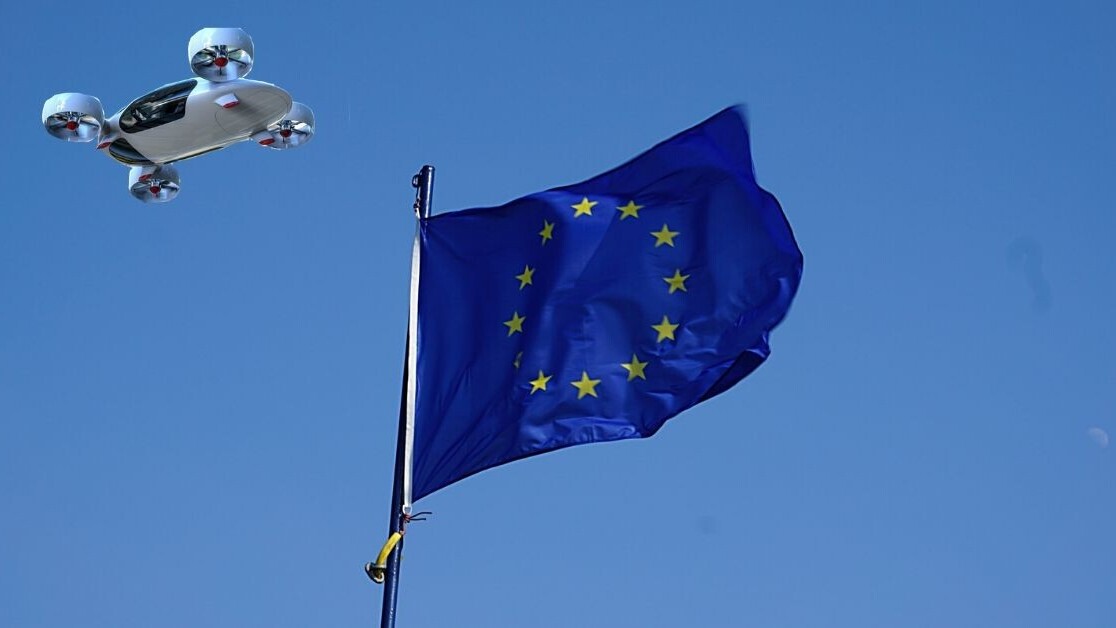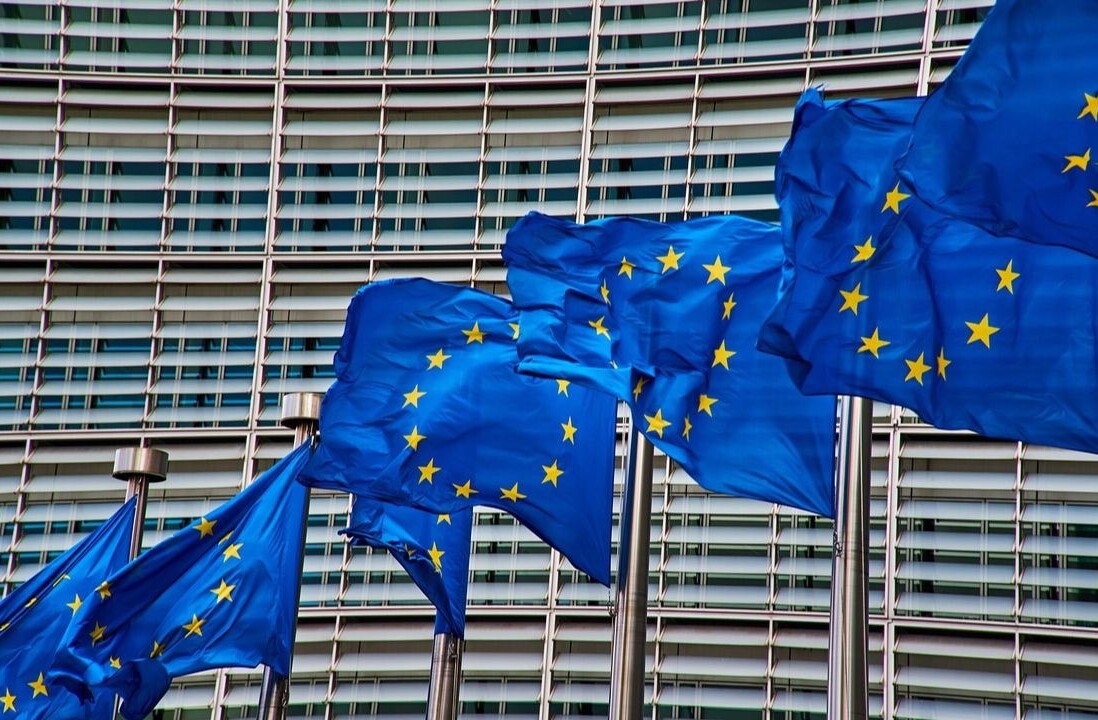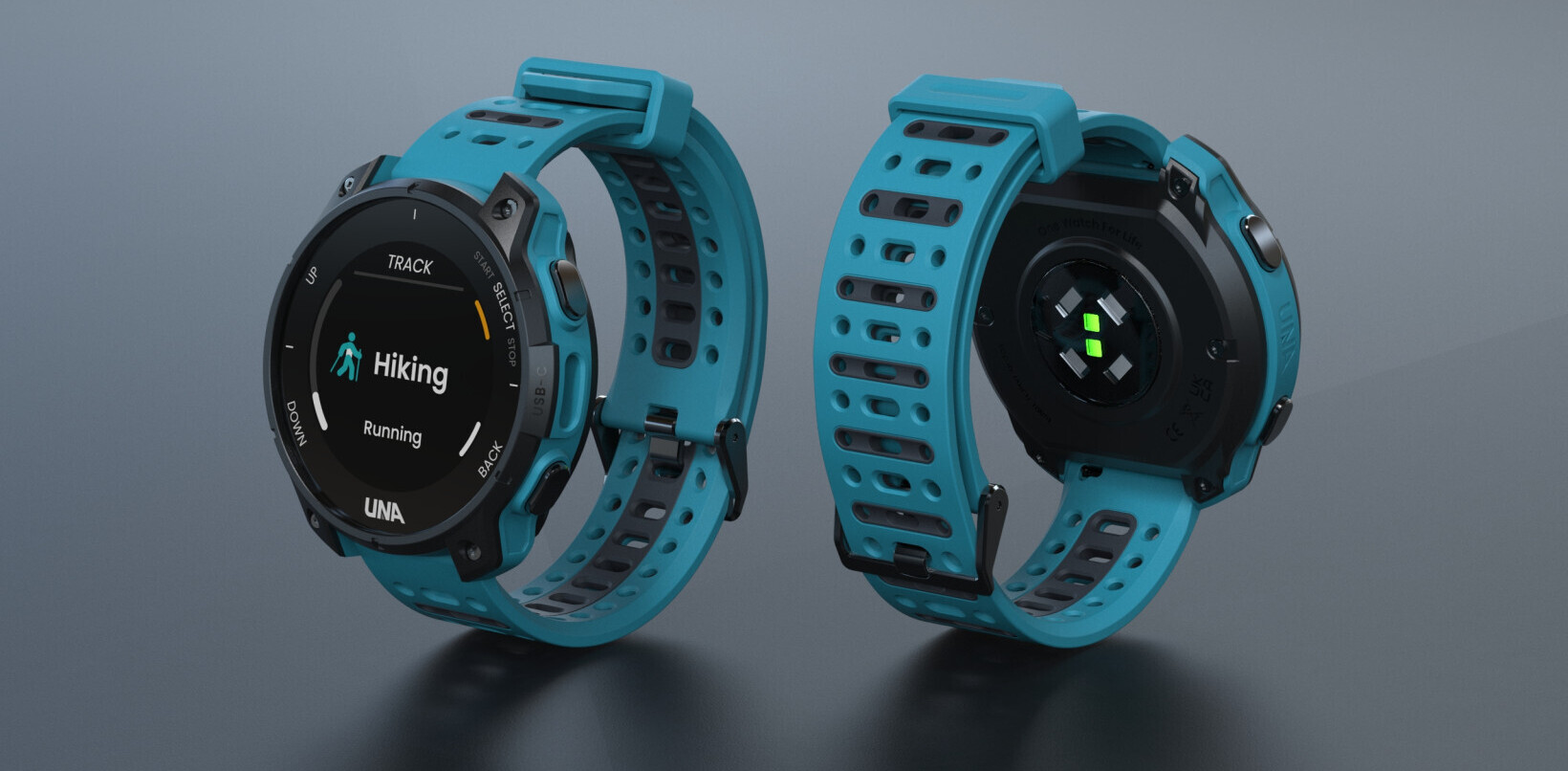
2020 is set to be a defining year for European tech. While startups and scaleups have been supported over the years through a number of EU-based programs, newly elected European Commission President Ursula von der Leyen has made achieving technological sovereignty a rallying cry for more globally competitive European tech brands.
This shift is heating up Europe’s focus on the promise its hot young scaleups can bring. But what will define the ‘Made in Europe’ tech brand, and how can it compete against the Facebooks and Googles of the world?
To find out, I attended this year’s EIT Digital Challenge to speak with the movers and shakers shaping this new era of European tech.
Prediction 1: The balance between innovation and regulation will be the EU’s winning factor
I first sat down with EIT Digital’s Chief Innovation Officer, Chahab Nastar, to discuss the broader context facing the European tech scene. As Nastar explained, the Commission’s new call for technological sovereignty isn’t just about increasing revenue:
It has to do with Europe being able to counter the American and Chinese platforms that have these very virtuous network effects that lead to a winner-takes-all landscape. You want to buy something? There’s Amazon. You want to chat with your friends? There’s Facebook. You want to look for a CV? There’s LinkedIn.
So far, Europe has been a little bit passive with respect to other continents’ platforms coming in and taking over. So what should Europe do? And how will Europe defend its technological sovereignty?
At the same time, major tech giants like Facebook have faced public backlash in recent years for failing to protect their users’ data, with many vowing to delete their profiles — meanwhile continuing to use Facebook-owned Instagram and Whatsapp. And therein lies the problem.
The EU has responded to these scandals by introducing stricter privacy regulations to protect users’ data. But has this come at the expense of innovation? Nastar told TNW:
What makes Europe very specific is that you have to manage the balance between innovation and regulation. Innovation is bold. It’s about experimentation. It’s about going wild, making mistakes, being on the edge… and regulation is all about protecting the citizens, defending their interests, enabling them to look over their data, to give their consent, and opt out, etc.
So the European DNA needs to find the right balance between protecting citizens while still letting innovators flourish and experiment. And sometimes we need to introduce regulations that actually favor experimentation.
In an era when many tech giants and institutions have lost public trust, this balance may just be the key differentiator the ‘Made in Europe’ tech brand needs.
But how will Europe’s tech identity translate into the different practical areas of tech? To find out I spoke with EIT Digital finalists from the areas of digital finance, tech, cities, industry, and wellbeing to get their perspective.
Prediction 2: Better cooperation between banks and Fintech
Trust in financial services and institutions took a nosedive globally during the 2008 financial crisis. 11 years later, they still haven’t fully gained it back, especially within Europe.
Payment Services Directive 2, better known as PSD2, is one recent EU regulation aimed at making users’ banking experience more transparent, accessible, and secure.
PSD2 does this by paving the way for third parties to provide services that add value on top of a bank’s existing infrastructure and data through open APIs. Another is by enhancing consumer protection by ensuring users are not liable for losses resulting from, “theft or misappropriation of the payment instrument (e.g. data breaches, hacking attacks).”
If this sounds confusing, that’s because is. I spoke with two of EIT Digital’s finalists in Digital Finance to find some examples of how this works in practice.
Providing services that meet users digital needs
Today we have subscriptions for absolutely everything, whether it’s your internet, electricity, Netflix, Spotify, or that pricey gym membership you said you’d use but never actually do. Often we have so many, we either forget we’re still paying for them, or continue to pay rather than go through the hassle of canceling them.
Minna Technologies is a subscription management software that integrates with retail banking services. It improves the user experience by creating a list of recurring costs that come up in your bank account and canceling any you wish to terminate with a simple click. You’ll never have to come up with an elaborate story about moving to a remote island where they don’t have BasicFit again.
Minna CEO Joakim Sjöblom was pretty confident PSD2 will not only improve users’ baking experience, but it’ll also provide new opportunities for banks to diversify their services, earn customer trust, and gain higher approval ratings:
I would say that the past three, four years with the PSD2 initiative has been about maturing into infrastructure. And I think now is the first time that we’ll see actual products delivered on that data. So we’re moving from European legislation to customer value and I’m really looking forward to that.
Outsmarting fraudsters
Another major issue that’s been plaguing the financial industry is cybersecurity. While banks have increasingly sophisticated protections in place, the weakest point of entry is often users themselves.
Buguroo is turning anti-fraud security on its head. Instead of focusing on reactionary measures, they’re analyzing anomalies in user behavior. Using behavioral biometrics, Buguroo’s platform can create user-profiles and detect when someone else may be using your account.
“The way in which you use your device is special,” Buguroo CEO Pablo de la Riva explained. “So if somebody uses your device or uses any other device in a different way than the way you use it, we will discover that. So if we detect any anomalies, we can predict that there’s a problem in the session before the money leaves your account.”
Prediction 3: Cybersecurity will no longer be a ‘nice to have’
Hackers aren’t just going after cold hard cash; personal data has become even more valuable, and harder to defend. Everyday platforms like DropBox, Whatsapp, and even institutions like the NHS, have been hit by cyberattacks, leaving our personal data vulnerable.
As Gerard Cervello, General Manager and COO of cybersecurity solution and EIT Digital finalist Blueliv, explained: “Money is one asset, but there are many assets a company needs to protect. Data for many companies is their lifeblood. If they lose their data they lose their edge and their operational capacity. Other companies rely more on IPs. So they need to protect their IP.”
“Others rely on reputation,” Cervello continues. “Your reputation has a big impact on your valuation in the market and the perception of your customers. So it goes much beyond money.”
The EU has responded by introducing new blanket regulations on cybersecurity, focusing on the ‘operators of essential services.’ Directive (EU) 2016/1148, which came into effect in November 2018, has sent companies scrambling to introduce new protective measures.
This has really paved the way for companies offering both more evolved and user-friendly solutions that companies big and small can introduce.
I spoke with Ioannis Bizimis, CFO of cybersecurity platform QuoScient, one of the winners of EIT Digital, about this ongoing shift. He explained:
So obviously there’s a big regulatory change in certain industries, like banking, which has traditionally been heavily regulated, but more and more industries that were not early adopters of cyber security solutions are having to react now. And then there’s another trend which we see that is going from a reactive to a more proactive, threat centric, risk centric approach.
Prediction 4: For digital cities, smart purpose-driven solutions will dominate over passing trends
The most meme-worthy Halloween costume of 2019 was the ‘busted e-scooter,’ and if you live in any major city, from London to Madrid, you certainly know why. Zipping through sidewalks during rush hour let us finally reenact a slightly less cool version of Marty McFly’s skateboard scene in Back to the Future. But the novelty soon wore off when we began having to navigate through a minefield of randomly discarded e-scooters on Saturday mornings.
In terms of digital cities, again, the European focus will be on tech innovation, not simply for the purpose of innovation itself, but solutions that will actually enhance people’s lives for the better.
No startup represented this better than EIT Digital’s Digital Cities winner Cerbair. While the growing use of drones has represented new opportunities for everything from medical supply delivery to pizza delivery, we haven’t considered the impact this largely unregulated technology could have on citizens if misused.
So far anti-drone protection solutions have been made for military use only, but, in a world where anyone can buy a drone online, civilians are left largely unprotected from potential threats. Cerbair CEO Lucas Le Bell explained:
Those solutions have, historically speaking, been the preserve of the military, but what is at stake here is the safety of our societies… we’re talking about airports, industrial sites, oil and gas, nuclear facilities, car manufacturing, corporates, events, concerts…
All of these people, they will never be able to afford, let alone have the legal right to buy such (anti-drone protection) military solutions. So how can we democratize such complex solutions to give the people in our societies the level of performance they deserve to ensure their safety? The industry is converging towards an integration process where the different technologies out there have to work together to synergize their strengths.
Prediction 5: Making complex technologies accessible and user-friendly
Complex technologies will also help bolster the growth of European businesses by providing better insights and more user-friendly tools to innovate processes. This year’s Digital Industry winners are great examples of this.
In our ratings-driven world, customer feedback is gold. But few have the skills needed to extract this valuable data. Wonderflow is a tool that empowers anyone in your organization to capture, analyze, and extract meaningful insights from customer feedback. CEO Riccardo Osti explained: “Our mission is to make complex technologies easy and accessible for everyone in the company. Customer feedback is only helpful if it reaches the desk of the people who can do something with the learning, not if it just reaches the desk of some technical people.”
Meanwhile, Oculavis is using smart glasses and augmented reality to provide better and faster customer support solutions to machine manufacturers. Managing Director Markus Grosse Bockmann told TNW: “With this technology, we can save travel costs to service technicians and machinery downtimes by being able to resolve problems on the customer side faster.”
An easy-to-use solution is especially important in this industry, Bockmann says: “I see that our client base, they’re very traditional companies and they are open to new technologies, but it’s often about changing habits and processes which always takes time. So it’s coming and it’s a billion-euro market, not only in our customer service segment but also in manufacturing and production.”
Prediction 6: Greater access and inclusion in health tech solutions
In a market that often ignores the needs of the minority in favor of the majority, Europe’s digital wellness scaleups are harnessing the power of emerging technologies to provide healthcare solutions that benefit the people who need them most.
Using digitalization and 3D printing to find the right fit
What if you needed a new pair of shoes but they only came in small, medium, or large? Or what if you could get any style or fit you wanted, but it would cost thousands of euros and will take multiple fittings?
Thanks to digitalization and 3D printing, Mecuris is creating custom prosthetics and orthotics, allowing patients of any age to get just the right fit. According to CEO Manuel Opitz: “We started in the niche of a niche. It’s like two billion every year paid by health insurers in Germany for all braces and prosthetic devices or artificial limbs. Compared to other healthcare areas it’s relatively small.”
With their software enabling them to scale down models of a prosthetic foot to any size, his team suddenly had parents asking:
“’Can you provide me with really small solutions for children maybe one year or 18 months old? When my child starts to walk they need a proper foot but it’s very expensive and not covered by my insurance.’ One month later we developed the first two prototypes and parents refused to give them back. That was the best proof for us to see we’re really onto something.”
Opitz continues: “With children, it may take six to nine months until they need a new foot. We can provide them with one quickly that fits perfectly in the right color, with the right animal, or pattern. And this really boosts patient compliance. In addition, it’s also much better for their development because they always have the right foot in the right size.”
Using voice technology to ensure everyone is heard
15 years ago, Voiceitt CEO Danny Weissberg’s grandmother suffered a stroke which impacted her motor skills and left her unable to communicate basic needs. After spending time in the rehabilitation hospital, he noticed that the nurse who cared for her on a daily basis could understand her: “I learned that if you talk with a person that has a speech disability every day, you can learn to understand their unique way of speaking. That triggered the idea.”
Voiceitt’s mobile application uses speech recognition technology to enable users with nonstandard speech (whether it’s due to hearing loss, cerebral palsy, Parkinson’s Disease, Down syndrome, etc.,) to communicate with others clearly in real-time.
The company is also now integrating its technology into smart home devices. As Weissberg explained: “By integrating our technology into smart homes and speakers, we can give people with speech and motor disabilities the ability to have much more independence in their lives.”
Prevention through gamification
For Tryggvi Thorgeirsson a physician and CEO of Sidekick Health, it’s about finding a preventative, rather than a reactionary, healthcare solution: “80% of our health costs go to chronic lifestyle-related conditions. But what we basically do is put out fires, as opposed to preventing them and I felt there was a really big need for high-quality tools to change that.”
Sidekick Health is a digital therapeutics platform that uses gamification to help patients manage chronic diseases on a daily basis.
“If you’re going to help someone change their habits, which is really difficult, you have to have dozens of hours of clinical interaction over many months. And yes, we can do it the old school way but it’s so expensive, we can’t do it when the problem is at this scale. For example, we have 450 million people globally with type two diabetes. So we have to have scalable tools for this and smart devices that you carry with you.”
With these scaleups leading the way, Europe’s quest for technological sovereignty has a good chance of becoming a reality. For now, let’s see what 2020 has in store.
Get the TNW newsletter
Get the most important tech news in your inbox each week.





